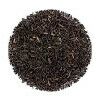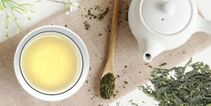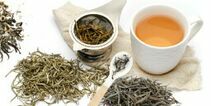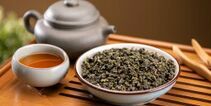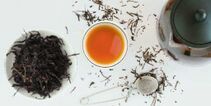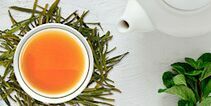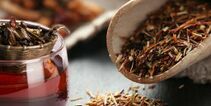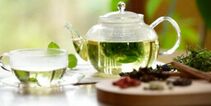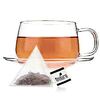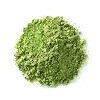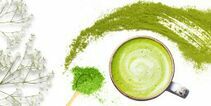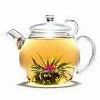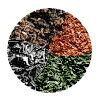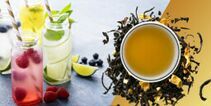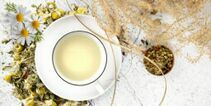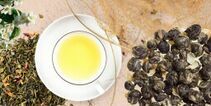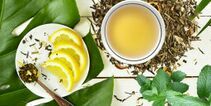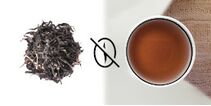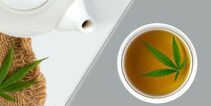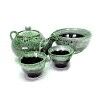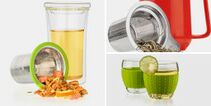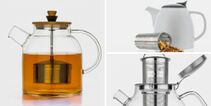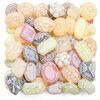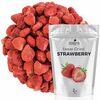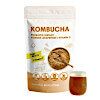Chinese milk oolong tea useful properties and contraindications
China is the undisputed world leader in the cultivation and export of this invigorating and aromatic beverage. Green tea accounts for a significant share of tea production. One of its subspecies is milk oolong tea, the benefits and harms of which we will consider in our article.
What is oolong tea?
Oolong tea is a medium fermented, selected, large-leaf variety. It is harvested from the highlands of Fujian, Anxi, Guangdong and the sunny island of Taiwan. Taiwan. This beverage has several completely incongruous names. In translation from ancient Chinese, it is called "dark dragon". However, many people call it "turquoise" because the leaves take on the color of the azure sea during processing.
Characteristics of high-quality oolong
In China it is the middle ground between black, red and green teas, combining their best qualities. It is similar to the latter in taste and in smell to the latter. Black teas are 100% fermented, green ones are 10-12% fermented and milk oolong is 50% fermented. The final, properly brewed beverage has a caramel and creamy aftertaste, a light lemon color and light subtle notes of fresh cream.
High-quality oolong, as it is called in England, is characterized by the whole leaves rolled up into hard round pellets which open when wet. High-quality oolong should be free of small particles, dust, twigs and other impurities. If you smell a pungent aroma of milk, it is most likely that the raw material has been artificially flavored.
What kinds of oolong tea are there?
The best known are:
- Chinese oolong tea - has a delicate soft creamy aftertaste.
- Taiwanese oolong tea has a sweet flavor and milky smell. Only royal, expensive varieties are made from such tea bushes.
Traditional and flavored oolong varieties are also produced. To create a pleasant aroma, ginseng, rose extract, cinnamon tree extract, and aromatic jasmine flower petals are used.
The unusual flavor of oolong

There is a hypothesis that the creamy flavor comes from irrigating the tea bushes with milk mixture or pre-soaking the shoots in milk. But this is not true. It is characterized by a delicate, subtle flavor that develops during a special fermentation process. All leaves are subjected to oxidation and withering, which gives it its characteristic aftertaste and flavor.
Due to the popularity of this variety, producers often cheat by adding artificial flavorings to ordinary tea leaves. This method is less expensive and easier to produce naturally. Therefore, if when you buy it you detect the same fresh cream flavoring, it is most likely a banal flavoring.
Chemical composition of tea
The composition contains a huge number of medicinal substances, as well as a number of micro- and macronutrients. The leaves contain magnesium, phosphorus, calcium, manganese, zinc and fluorine, useful for strengthening tooth enamel, improving sexual function, stimulating brain activity.
In two words it is impossible to answer the question what is the usefulness of milk oolong green tea because it contains a whole complex of vitamins. B vitamins have a good influence on the digestive processes and stabilize the psycho-emotional state. "PP" makes blood vessels more elastic. Group "E" - stimulates cells of the epidermis, improves the appearance of the skin, prevents atherosclerosis. Vitamin "A" is indicated for those in the stage of physical development, and "K" influences the work of the liver and gallbladder.
Oolong tea production
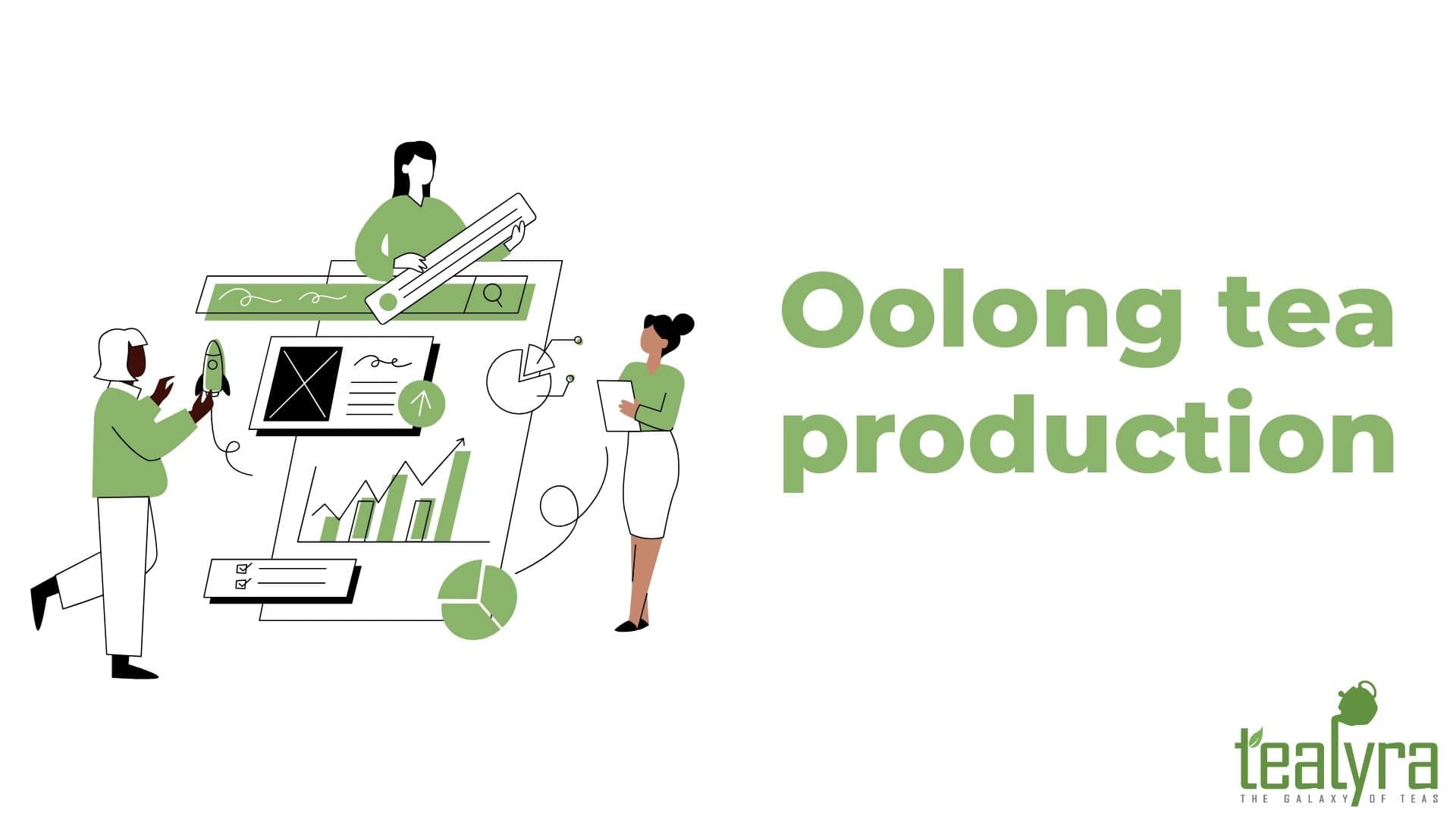
The variety is not fully fermented. It is intermediate between black and green teas.
Fermentation refers to the process of oxidation of the substances contained in the raw material. The juice released when the tea leaf is rolled up undergoes an oxidation and fermentation process. It is important to control this process and stop it in time before the tea is completely fermented and turns black. As a result, the leaves develop an unusual aroma and flavor. In this way, the most expensive and well-known varieties are obtained.
Oolong production has its own peculiarities:
- The raw material is harvested from adult, fully formed bushes. The young shoots and buds are immediately removed.
- The leaves are wilted in the open air for at least an hour.
- The wilted product is transferred to bamboo sieves.
- To speed up the fermentation process, the tea leaves are crushed for several hours inside special drums where the tea leaf breaks off and exudes its juice.
- Fermentation is stopped by heating in rotating drums.
- The raw material is then shaped and twisted, depending on the variety.
- Roasting: fast at high temperature and slow at low.
- Selection and packaging.
Oolong can be flavored in several ways:
- Treating the bushes with a cane sugar-based liquid with milk flavoring.
- By adding milk whey to the raw material just before the final packaging.
The latter option is used much more frequently.
The benefits of milk oolong tea
Its beneficial properties are stronger than those of many similar varieties. Its effects on the body are largely similar to those of the black varieties and the most expensive white varieties in the world.
- It has gained its popularity due to the fact that it effectively breaks down fat. Of course, it does not guarantee fast weight loss, especially if you drink it with high-calorie cakes. But in combination with diet and exercise, it will undoubtedly give the desired result in the form of weight loss.
- It is known for its antioxidant properties. Those who liked this drink are less prone to various ailments.
- It is shown to people in the older age group who have diseases of the cardiovascular system. Its active ingredients can help strengthen blood vessels and make their walls more elastic.
- It is a good immunostimulant that helps to strengthen the body and prevent colds.
- It has a positive effect on the cells of the human body, slowing down their aging processes and restoring collagen levels. Collagen makes the skin firmer and it looks healthier and younger.
- It helps to eliminate cholesterol from the body, gets rid of toxins, slags and heavy metals, not allowing them to settle on the walls of blood vessels.
- In addition, it promotes weight loss (in a comprehensive program of weight loss) due to the fact that it normalizes metabolism and improves the function of the gastrointestinal tract.
- It ensures the stable operation of all vital systems in the body, prevents strokes and heart attacks.
In addition to the therapeutic properties, milk oolong tea also brings other benefits to the body - it elevates the mood and helps to overcome depression. It activates brain activity, invigorates, removes fatigue and restores strength.
Harm from use
The main negative impact of the drink arises from the caffeine in the composition and all kinds of flavor additives (cream, caramel, milk). Although, the latter are present only in low-grade tea. If you buy a high quality product and drink it in moderate quantities, it will not cause harm.
Before drinking it, it is advisable to study the composition for the presence of elements that can cause allergies.
Rules of choice
The choice of variety depends on individual preferences and the state of the body as a whole. Weakly fermented is recommended for those who seek a less pronounced flavor and aroma. Strongly fermented - for those who want to feel a richer taste. Pay attention to the quality of the product and how you achieve a refined flavor - in the production process or by adding flavorings.
The main difference between a low-quality fake and a real oolong is its weight. Oolong is supposed to be heavy due to tightly rolled tea leaves. Its appearance is characterized by a green color with easily noticeable highlights.
Refuse to buy if instead of individual lumps there is fine dust or damaged leaves.
Oolong tea as a means for weight loss
It has long been known that Chinese milk oolong tea has beneficial properties and helps to cope with excess weight. Its consumption accelerates metabolic processes and leads to fat burning. Drinking 3-4 cups a day for a month you are guaranteed to get a weight loss of 3 to 6 kg.
Rules of brewing oolong tea
It is possible to enjoy the extraordinary taste and delicate aroma and benefit from drinking oolong tea only if it is brewed correctly. This process is very delicate and has its own nuances. Earthenware or ceramic pots are suitable for it. But it is only if you choose a clay pot that all its aspects will be unveiled. This clay is porous but it keeps all the healthy elements inside and has a rich flavor and aroma.
A good-quality tea leaf can be brewed up to 10 times. The infusion time increases by 3 minutes each time. But the most useful and correct is considered 3-4 cycles.
Before pouring dry leaves into the vessel, it is recommended to rinse it with boiling water. This will help quickly and more vividly reveal all the shades of flavor and aroma.
The duration and temperature of brewing are taken as an average, classical principle - 75-85 ° C for 1-3 minutes. But in reality, these parameters depend on the level of fermentation. So, weakly fermented, pour water at 65-70 °, strongly fermented - 90-92 °. If you exceed these limits - you can kill all the useful properties.
The selected bowl is filled with tea by 1/3 and poured with boiling water. The first portion is poured after a couple of minutes. This infusion is not yet suitable for consumption. The second time, fill the container with hot water, close the lid and insist 2-4 minutes, then pour into bowls.
Storage nuances
Like other teas, oolong tea absorbs all the aromas that float around. It should be stored not only away from pungent foods, but also separately from other teas.
It's not recommended to use tin or metal jars for long term storage. It is better to look for porcelain, ceramic or glass vessels with a tight-fitting lid. If the container is well sealed and there is no air penetration, it is acceptable to store in the refrigerator. But it is better to choose a dark, cool place and opaque dishes, shielding the contents from sunlight, in which all the active substances oxidize and the taste and aroma fade.
How to drink oolong tea correctly

Tea masters recommend drinking oolong tea after meals. However, it is advisable not to wash it down with desserts and sweets, as with traditional tea drinking. It is a useful conclusion to a meal, helping the body better digest food.
The drink is not recommended to drink just before going to bed. The composition is characterized by tonic properties, which can lead to sleep disorders.
To improve lactation
Milk tea stimulates milk production in breastfeeding mothers, as well as saturating it with nutrients. For this purpose, grated cinnamon is poured into a warm drink. When brewing, a little more water is added to the regular batch to reduce caffeine intake.
Gastritis
Diseases related to the gastrointestinal tract cause a lot of discomfort. The main ones are proper food choices. Just one inappropriate ingredient can cause pain, heartburn, burning and other unpleasant symptoms. Oolongs can be used for stomach upsets, gastritis, and other similar ailments. They are drunk on an empty stomach up to 4 times a day.
Cholecystitis
This is a disease in which the body has a violation of the outflow of bile. This occurs as a result of inflammatory processes in the gallbladder, which eventually have a negative impact on all internal organs and as a consequence of human well-being. Milk tea is recommended to drink 1-2 times a day, before meals. This helps to activate the full functioning of the gallbladder and liver.
You should know! Oolong is contraindicated in the presence of urolithiasis. Its intake can promote the movement of stones along the passage, creating blockages and worsening the condition of the patient.
In pancreatitis
In the acute form of pancreatic disease, accompanied by an inflammatory process, it is better to refuse to use, due to the fact that its components can provoke a painful syndrome. In the chronic course of the disease is allowed to drink tea once a day. In this case, the basis should be a 5-6 brew. In this consistency, the drink will not do any harm.
Diabetes
If you drink oolong tea without additional sweeteners, it can reduce the amount of sugar in the blood. Together with it, proteins enter the arteries, stimulating the production of insulin and preventing the development and progression of coronary vascular disease.
Contraindications
Tea is the most innocuous of all existing drinks and has a positive effect on the body and psycho-emotional state. However, each variety has its own side effects and before brewing it is better to ask in advance what the consequences of tea drinking will be for you.
It is always worth remembering that oolong tea:
- It is forbidden for hypertensive people. Thein significantly increases blood pressure on a par with caffeine.
- Do not drink it before going to bed. It has a stimulating effect, not allowing a good night's sleep.
- It is a strong diuretic. Therefore it is not shown to people with kidney disease.
- It is not recommended to use it by pregnant women. As described above, it can sharply increase the blood pressure.
- It is categorically contraindicated in GI disorders, ulcers, gastritis and colitis. Especially its effect is undesirable during exacerbations of these diseases.
If you do not have the above restrictions, it is still better to listen to the advice of doctors and set yourself a rate not exceeding 3 cups a day.
Conclusion
Knowing the main useful properties and contraindications of green tea oolong, you can safely treat yourself to a cup of this refined drink with a pleasant aroma. If it suits you on all indications - make it a rule to consume it after an evening meal. This will not only improve your mood, but also activate all metabolic processes, filling the body with energy and increasing immunity.

